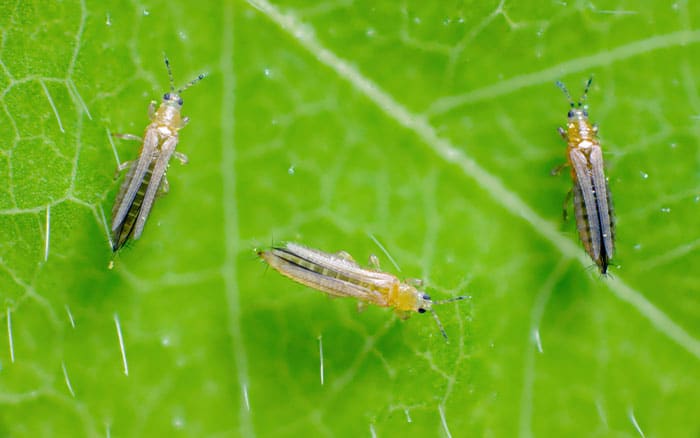As their name suggests, glasshouse or greenhouse thrips thrive in greenhouses. They feed on leaves and flower buds causing the upper leaf surface to develop silvery brown mottling and their feeding can result in distorted flower growth. Find out more in this pest & disease guide to glasshouse thrips.
What are glasshouse thrips?
Heliothrips haemorrhoidalis or glasshouse thrips are small, narrow insects up to 2mm long with dark brown bodies and an orange tipped abdomen. Their legs, wings and antennae are pale yellow.
Also known as ‘thunder flies’ because of their tendency to fly in large groups when the weather is thundery. They feed by sucking sap from plant leaves and flowers.
In a warm situation they breed year-round and complete their lifecycle within 30 days. They feed on most ornamental plants and many vegetables being grown under cover.
These thrips gravitate towards azaleas, fuchsias, orchids, Zantedeschia and citrus. As well as these, they are attracted to ferns and many other ornamentals, fruits, and vegetables grown in glasshouses.
Another tell-tale sign of their presence are red-brown spots deposited by them on the plant’s leaves whilst they’re feeding.

How to control glasshouse thrips
Glasshouse thrips thrive in a hot, dry atmosphere. So, to avoid infestations, it’s important to keep the glasshouse cooler and more humid. This can be achieved by ‘damping down’, (spraying the glasshouse floor with water at regular intervals) and keeping windows and door open.
Blue sticky traps can be bought from garden centres. When hung amongst or above plants in the glasshouse, these can trap thrips.
Biological controls in the form of predatory mites and bugs can work well used in glasshouses. Always use organic rather than chemical sprays, as these are less likely to harm beneficial predators and other insects, such as bees.


Leave A Comment